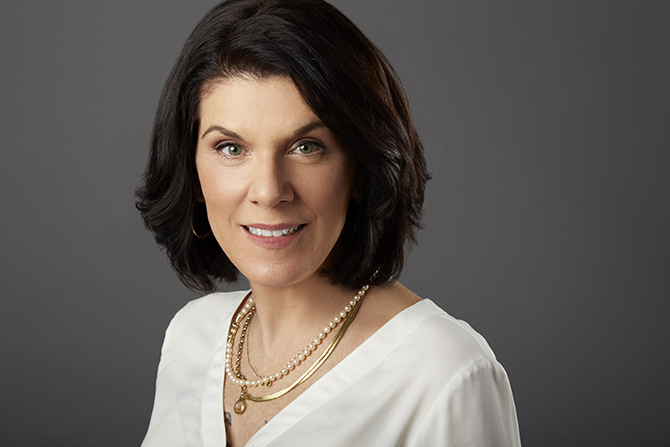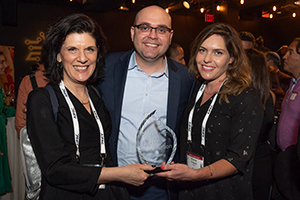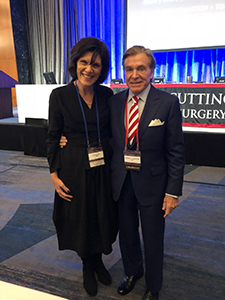ENTREPRENEUR’S CORNER
Time For Breast Cancer Change

By Efrat Roman
 SharkUpNation startup competition in NYC
SharkUpNation startup competition in NYCI come from a long dynasty of women affected by breast cancer. My grandmother, her four sisters, my mother, and I were all diagnosed with breast cancer “thanks” to our BRCA gene mutation. I was 9 when my grandmother was diagnosed. I remember her losing her hair and wearing headscarves—it left a mark on my childhood and growing up. When my mother was diagnosed, I was a teenager. At the time, being diagnosed with breast cancer was practically a death sentence, and mastectomies were the protocol. Lumpectomies were starting to be considered, so my mother insisted on it-against her doctors’ recommendations.
Breast cancer followed me around for years until it finally caught up with me when I was diagnosed at 40. I went through a double mastectomy with immediate reconstruction, which failed, and then had another five surgeries. I couldn’t do the sixth and opted for a tattoo on my chest instead.
 Efrat Roman with Dr. Sherrell J. Aston at the Aston Baker Cutting Edge Aesthetic Surgery Symposium NYC
Efrat Roman with Dr. Sherrell J. Aston at the Aston Baker Cutting Edge Aesthetic Surgery Symposium NYCTHE ROAD TO NORMALCY
Nearly 83 percent of women with breast cancer have had PTSD symptoms between the time of diagnosis and starting treatment, which is typically the time surgeries are performed. When I discovered this, it shocked me at first. But that was because I hadn’t entirely accepted my trauma. I was part of that percentage; I knew why they had PTSD symptoms because I had them too. Waking up in the hospital bed and experiencing your new body for the first time with the current standard of care (or lack thereof) is traumatizing.
Physical recovery is hard. We wake up with drains coming out of our armpits, pain, huge scars, limited mobility, you name it! For many women, and me, the harder recovery is the mental one—and it leaves invisible scars and trauma. I woke up covered with dressings improvised from all kinds of bandages and tape. I wore a reusable post-op compression bra, and not a single one of them was designed for me or my post-op needs.
Recovering at home was a nightmare. The reusable bras became soiled and washing them was humiliating. Lifting my arms to change was impossible, and I needed help. My mother was there for me, and I am thankful for that.
But I began thinking this couldn’t possibly be the standard of care. With so many breast procedures performed annually, there must be some breast dressing designed for breasts post-op. I searched, I spoke to the community and medical professionals and realized there was nothing.
The solution I thought of was so simple.
 The EZbra
The EZbraRECOVER WITH DIGNITY
EZbra was born after a long journey involving in-depth research, R&D developments, and the challenges of building a medical device company from the ground up. I discovered challenges along the way—like trying to present a medical device for women to mostly male investors, but nothing was going to stop me.
It was designed for post-op use and is made to allow more easy application by the patient and caregivers. It’s absorbent while being very light, soft, and breathable; it can be adjusted separately on each side to fit most shapes and sizes. All this is done without any adhesive or latex, which eliminates the risk of allergic reactions and medical adhesive-related skin injuries (MARSI).
I was set on making a change in women’s healthcare that was a challenge in and of itself. But it was not the only one. To find potential investors, I found myself presenting the physical and emotional aspects of this disease, a process that included graphic post-op images. It was a learning process, and I found amazing women investors who believed in EZbra and understood that this was a necessary and much-needed change. And it worked!
For more information on EZbra, visit ezbra.com.
MAKE A DIFFERENCE
There is no question that awareness is essential. Thanks to breast cancer campaigns, women everywhere are getting checked, and early detection saves lives. This October, we want to do more than raise awareness. We want to make a real change in the lives of patients. For those who wish to help, visit the EZbra website, choose a breast cancer organization they support, and make a purchase. In turn, we will send those EZbras to the organization as well as a donation of 10 percent of the unit price of $30.
The ground is moving, and it can no longer be ignored—we won’t let it. I invite you to be a part of this revolution and help millions of women around the world by improving the standard of care as they recover from breast surgery. -ER




